Catherine Ryan Hyde's Blog, page 18
January 6, 2015
An update on the Young Readers Book Program

Most of you know that on October 30th of last year I announced the Pay It Forward Foundation's Young Readers Book Program with my blog post entitled You Can Pay It Forward to the Pay It Forward Foundation.
I asked people not only to spread the word that classroom sets of Pay It Forward: Young Readers' Edition are being given away free to teachers, but also spread the word that donations are needed to keep the program going.
Here's the update: We purchased 325 books with a donation made by me to get the program started. We purchased a second 325 copies with matching funds from the Foundation. We have given away almost 600 books to teachers all over the country as well as book grants to Australia and Sweden. We have 60 copies left.
What does that mean for the state of the Young Readers Book Program? That's up to you. We've received a few donations into the program, about enough to give two more book grants of 30 books each. Then what? We either get more money into the program, or we say it was great while it lasted. I hope we get more money into the program.
If you want to help, a small donation would be great, but so would sharing. If you all share this call to action, we'll have it made. Most people can kick in $10 or more, but the trick is reaching enough people. So please do share that we have books to give away, but know that they will be gone almost immediately. It's the call for donations that will keep these books flowing to teachers who couldn't otherwise afford them.
Here is the donation page of the foundation. There's a drop-down menu that will allow you to dedicate your funds directly to this program.
Thanks, and let's keep Paying It Forward!
January 1, 2015
Deal Alert: When I Found You for $1.99

I'm pleased to announce that When I Found You has been chosen as a Kindle Monthly Deal for the third time in its published life. That means that the Kindle ebook edition will be $1.99 for the entire month of January.
This was a very significant book in my life. It sold at least as well as Pay It Forward, restarted my career, and helped me connect to my audience of readers (translation: YOU), the people who like to read what I like to write.
If you already have a copy, please pass this deal along to reader friends who have not read it. That word of mouth is always much appreciated.
Happy New Year, folks! I think it's going to be a great one.
December 23, 2014
The 15th Anniversary Edition of Pay It Forward is here!
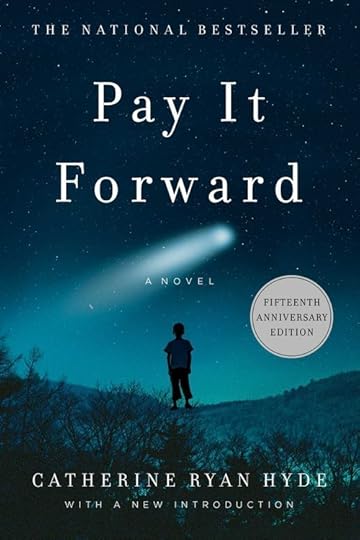
Today (December 23) is a book birthday of sorts. Today is the day Simon & Schuster releases the 15th Anniversary Edition of the Pay It Forward book, the original adult version. It has a lovely new cover, a new introduction by me, and it's a great celebration of the fact that the book has been in print for fifteen years! The more you know about the publishing business, the more you will appreciate how truly unusual that is.
I told my former agents (they are now in a new line of work) years ago that my goal was for Pay It Forward to stay in print longer than I do. Well, I still have a few good decades in me, but so far so good.
Pay It Forward fans, please pass it on. Great time to buy copies to give as gifts. Yeah, I know. We just missed Christmas buying. But Pay It Forward is about giving all year round, not just on Christmas.
Thanks to all of you who made this book such a success and kept it in print all these years by buying copies. You are appreciated!
December 10, 2014
The Don't Let Me Go scene adaptation is here!
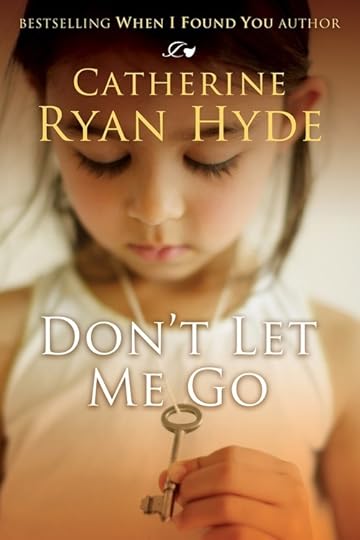
I've been talking about this for a while. And if you follow me on social media, you've probably seen a couple of little short "teasers" for it, such as a montage introducing the characters, the Grace actress doing a monologue she memorized for her audition, and even a behind-the-scenes "making of" video. (If you didn't see those videos, you still can by going to the Don't Let Me Go Scene Adaptation page in Extras.)
It's not a whole movie. It's an adapted scene. The best way I can describe it, I think, is to say it's a very different way of looking at a book trailer. In the past I recorded myself reading excerpts from a book and made a little film or montage of photos for you to watch while you listened. But this really takes it a step further. It's an actual live-action production of the excerpt!
Okay, enough talking about it. Here it is. And of course I look forward to hearing what you think!
December 9, 2014
Celebrating a book birthday today!
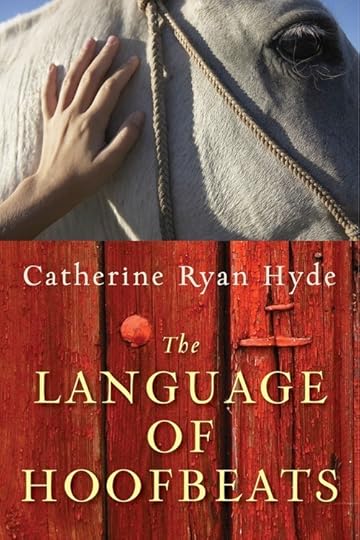
I'm vaguely questioning whether this even needs saying. My wonderful readers have been so all over this new book. Most of you have pre-ordered it. I already have excited posts and comments to Facebook saying that the ebook has just dropped onto their Kindles.
And besides, I've been doing a countdown to the book, for heaven's sake.
But I'm saying it anyway, if only because it's so exciting. Just in case there's anybody out there who doesn't know, this is a book birthday for me. This is the day The Language of Hoofbeats bursts out into the world.
The reviews are just lovely so far, and it seems to be enjoying a great reception.
If you preordered it, look on your Kindle. It should be there. If you didn't preorder it, if you go click the buy button now, for $4.99 you can be reading it in about 30 seconds.
Now that's something to celebrate! I hope you'll come back and share your thoughts, either publicly or by email. I always love to hear from you.
December 4, 2014
Yet Another Deal Alert, this time for paperback

In addition to the WALK ME HOME ebook being featured as a Kindle Monthly Deal, TAKE ME WITH YOU is included in a new print book deal, just in time for the holidays. It began Monday, December 1 and will run through the end of the month. The beautiful trade paperback edition is only $9.50--more stocking-stuffers for the readers on your list!
And here's where it really gets good, in my opinion. With the Kindle Matchbook Program, if you buy a copy of this book for $9.50 to give as a gift, you can get the Kindle ebook for yourself for only $0.99.
In other words, happy holidays to all!
December 1, 2014
Deal Alert: Walk Me Home for $1.99 all through December
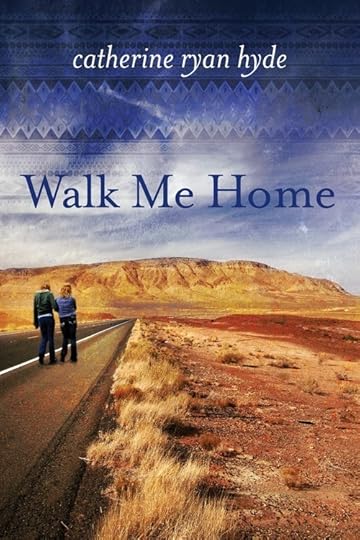
Great news: Walk Me Home has been chosen as a Kindle Monthly Deal for the month of December! That means the Kindle ebook is only $1.99 all month. And what a great month for it, too, right? More stocking stuffers. And of course you get to buy holiday books for yourself, too.
So if you missed this title, here's your chance. And you might pass the deal news along to your reader friends, if they're the type to appreciate such bargains.
Between this monthly deal and the release of The Language of Hoofbeats on the 9th, December promises to be a great month.
Thanks, and happy reading!

November 29, 2014
Better Than Blurbs: Dissonance by Lisa Lenard-Cook

Because I no longer write blurbs, but still very much want to help other authors, I've launched a blog series called Better Than Blurbs. The authors and I have in-depth discussions about their books, which I hope will help readers identify whether they'd enjoy reading them.
This is the thirteenth post in the series (hope you're not superstitious, Lisa). The author is Lisa Lenard-Cook and the book is a favorite of mine, Dissonance.
Me: Will you please tell my readers a little about the book in your own words?
Lisa: In other interviews (including the readers’ guide on my website), I’ve talked about the three seeds for the book. But because, twenty years after I first wrote it, the reissue gave me the opportunity to reread it myself, I’ve read it as a reader. So I’d love to answer this question as if I were writing a review.
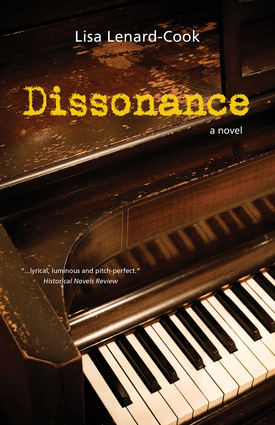
At its heart, Dissonance is about love, war, and forgiveness. It begins in 1995 when Anna Kramer, a piano teacher in Los Alamos, New Mexico, learns she has inherited the journals and music scores of Hana Weissova, a concert pianist originally from Prague whom she does not think she knows. As Anna reads Hana’s journals, plays her music, and learns about Hana’s experiences in the concentration camp Terezin during World War II and in New Mexico when the war is over, what she discovers about Hana and her life helps her come to terms with the mysteries and misunderstandings of her own.
In addition to these interwoven stories, music theory is sprinkled throughout the book. Some readers may be put off by this seemingly disembodied voice. (The first sentence is, “The piano is unique among instruments for its double stroke.”) What is it doing? Why is it here? Part of the answer lies in the opening section of music theory, when we are told that dissonance “is a fitting metaphor for what this [the 20th] century has wrought.” But if we also ask that the first sentence of a fiction contain all that comes after, then we need to look more closely at that “double stroke.” I’ll leave the many possibilities open to the reader.
Me: To throw a little of my own experience in here, I not too long ago began to write a book that was to be set in Warsaw during the Nazi invasion. I never ended up finishing the book. I may still at some point. But I have to say it, the research dragged me down. Yet Dissonance never dragged me down. It never felt overwhelmingly heavy. Can you tell us about the research you did for the book? Do you have any idea how you pulled off a book that touches on the Holocaust but is not depressing? Because it’s really quite a feat.
Lisa: What a lovely compliment. Let me begin by saying I never planned to write a book about the Holocaust. For one thing, I didn’t live through it, although many of my friends’ parents in North Buffalo did. But the more I’ve thought about the Holocaust aspect of the book over the years, the more I’ve realized how much Hana Weissova’s indefatigable spirit owes to Gerda Weissman Klein, my childhood friend Leslie’s mother, whose memoir All But My Life I highly recommend. Hana’s story has little in common with Mrs. Klein’s. But among all the survivors I knew when I was growing up, only one—Mrs. Klein—chose to share her story. In doing so, she became an inspiration to others, and in particular to me.
[Me, note: I should probably mention at this juncture that Lisa and I have some interesting coincidences between us. I also grew up in North Buffalo, though we didn't meet there, and my father's side of the family is Jewish. His mother, my grandmother, had come over from Germany/Poland (the boundaries changed with time and war) long before World War II. But she had a good friend in the neighborhood, Esther Bestry, who had the tattoo on her arm. And I watched Night and Fog in high school knowing how easily that could have been me. But back to Lisa]
But you asked about research. Despite an undergrad degree in History, I’m a peripatetic researcher, or, in more contemporary terms, perhaps an ADD-afflicted one. I dip and taste, then flit off to the next tidbit. I seldom read history or science books straight through, but rather flip each book open randomly, until I’ve read everything. Sometimes I read them backwards.
Each day, when I sat down to work on Dissonance, my sources lay open around me on my desk (an enormous library table my husband built for me when I finished grad school). I’d open one of the music theory randomly, read what was there, then reconsider it in my own words in the notebook where I wrote the book (I was still writing longhand then). Not all of the music theory I first wrote about remained. But a lot of it did.
In the case of the Holocaust, and in particular Terezin, I already knew a great deal, first of all because I was raised Jewish and knew survivors, and second because I’d read Holocaust fiction and memoir both as a girl and an adult, beginning with Leon Uris’s flawed-but-important Exodus. So the books I chose for my research as I wrote Dissonance were specifically about Terezin, about Prague, about people who’d been at Terezin (as well as about the Manhattan Project). I also reread Mrs. Klein’s book and a number of other memoirs, including Elie Wiesel’s Night and The Diary of Anne Frank. These two particular memoirs succeed—connect, resonate—because of their voices, and I think that Hana’s story is, as you put it, “not depressing,” because hers (like Anne Frank’s—who can forget that line just before the end: “In spite of everything I still believe that people are really good at heart”?) is a hopeful voice. As Hana herself says, “Remember and forgive. There is time for little else.”
Me: I rarely ask questions like this. Non-writers are usually the ones who ask, “How much of this is from your personal experience?” I tend to figure fiction is fiction. But the observations about music in Dissonance seem to go above and beyond what research will provide. So will you tell us about your personal experience with music?
Lisa: I’m a piano lesson dropout! My husband is a blues guitarist (with a day job), but, while I do occasionally play the guitar inherited from my father (who was emphatically not a musician), and love to croak along with love ballads on my solo road trips, my own experience with music has been more as a listener—an educated listener, perhaps, but a listener nonetheless.
But it wasn’t really music that captured me—it was music theory, more specifically the language of music theory—harmony, rhythm, consonance, dissonance—and how these words seemed emblematic of much larger ideas, abstract concepts we have trouble getting our minds around. The voice (because in the first draft, it was just a voice) talking about music and music theory in Dissonance seemed able to articulate questions I myself had (have) grappled with in ways I hadn’t previously considered. As an example, there’s the discourse at the beginning of the book’s third movement which ends, “Music implies a god.” I would not have arrived at this unexpected conclusion without that voice to guide me.
Me: As you know (but my readers may not) I read this book many years ago, around the time Coyote Morning came out. And I’ve always loved it. It’s one of my favorite books of all time, and I recommend it often. I needed (and wanted) to read it again to prepare for this interview. One thing I had forgotten was the connection to the nuclear bombs dropped on Hiroshima. (And still she manages not to be depressing!) You approached the subject with a remarkable lack of judgment. Can you tell us why the bomb was included? Was any parallel to the Holocaust intended? If not, how does the juxtaposition of the two advance the book, in your opinion?
Lisa: The juxtaposition became intentional only after I’d finished the first draft. When I read the manuscript after I’d put it aside for a few months, the parallel was clear, so I tweaked it a bit, but, as with everything in the book, I didn’t push it. One of effects I am always after is to let as much as possible speak for itself, to just lay out the facts and let the reader draw her own conclusions. That’s why, in Dissonance, there’s extra white space between sections, to allow the reader to think.
In all my fiction (and here I include the many unpublished novels in my closet) my goal is to present all sides of an issue (not “both sides,” note—there are as many sides to any issue as there are interested parties) without taking a narrative stance. This isn’t easy, because I, the author, always have a stance. But what I’ve found is that using leitmotifs (like the music theory in Dissonance), repetitive elements outside the story (the letters to the editor and Coyote Facts in Coyote Morning), and metaphor allow me to show all those sides without insisting the reader think as I do. In the case of Coyote Morning, I knew I’d succeeded because both the coyote lovers and the coyote haters in the New Mexico village where I lived when I wrote the book believed I was on their side.
The other aspect of this I’d like to mention is how views change over time. Our generation believes that dropping those bombs on Hiroshima and Nagasaki is unforgivable. But our parents’ generation believed, as it says in Dissonance, that they “helped end a war that had already gone on far too long.” Revisionist history is fascinating because it imposes a contemporary lens on the past. I’m always amused when someone suggests that history is “objective” or “true.” Like all events retold, history is created—and recreated. As a fiction writer, I believe that we’ll find our larger Truths in fiction.
Me: Of course, I was delighted to hear that this book was being rereleased. It’s a wonderful opportunity for a book that so richly deserves it, in my opinion. It’s unusual, though, for a “small” (though it shouldn’t be) book to get that chance. Will you tell us more about the arc of its publication and re-publication?
Lisa: Despite the book’s many awards and honors, UNM Press had, of course, moved on to promote other books. So, in 2008, at the encouragement of a friend in the business, I got the rights back to the book, thinking that perhaps I could sell it to a bigger house. Unfortunately, the publishing industry was soon in as much of an upheaval as the economy itself. Then, in the summer of 2013, I got an email newsletter from Santa Fe Writers Project (SFWP). As I’m sure you do, I get lots of these newsletters and aggregations and headlines and blog announcements and the like. But, for some reason, I read this one, and clicked through on some of the links, in particular a Washington Post Magazine article about SFWP’s founder, Andrew Gifford (and boy, has he got a story!). Once I’d finished reading the article, my well-tuned intuitive guide system told me I had to send Andrew Dissonance.
The SFWP website described a number of projects SFWP was (is) engaged in—a contest, a journal, and general submissions. I selected the latter. Not five minutes after I’d electronically submitted Dissonance, Andrew emailed back: “Are you sure you’re in the right place?” he asked. Yes, I told him. “Do you own the rights?” Yes, I said. Within days, Andrew was posting about his reading of Dissonance on Facebook. A number of mutual friends told me I’d better friend this guy. I did more than that. I sold him the book.
SFWP is in a far better position to support a small literary novel than either a big commercial publisher or a university press whose primary focus is not fiction. And Andrew loves reprints, and loves the books he publishes. Agents and editors toss the word “love” around a lot—but Andrew makes sure SFWP lives that way.
Me: I couldn’t decide whether to ask this, because I thought it might be a spoiler. But I noticed you revealed in the reader’s guide on your website that the woman whose music and diaries your protagonist inherited was, much to her surprise, her mother’s lover. I loved that about the book, because usually LGBT themes are much trumpeted, as though only gay people will be looking for them. They are so rarely a surprise. And I like what you’ve said, both to me and in public, about this aspect of the book. So will you please tell my readers a little bit about your discovery of this plot element, and why it felt right for this book?
Lisa: I think you’re referring to the fact that this was an absolute surprise to me. In fact, when Anna cries, “No!”, that was actually me—I was that shocked at this turn in the narrative. And frankly, as I continued to write the first draft, I thought that it didn’t belong, that it was a wrong turn.
But when I returned to the book a few months after writing that draft and read it through, I realized that this was one of the most important elements of the book (and this is a book with a lot of important elements!). Because the book is about love, in all its manifestations. It’s about accepting others, especially those different from oneself. And most of all, it’s about accepting those closest to us as they are, not as we wish they were. The latter, I think, is the hardest thing of all.
Me: What’s next for you?
Lisa: My agent is currently shopping a novel called Long Division to editors, and I’m working on a new novel, called Dear Lucia, about a woman whose mother leaves her family in 1975, when the daughter is 12, then surfaces a year later with a book that becomes a bible for second wave feminists. I’ve also got three short stories I’m working on—short stories take me much longer to write than novels—and two memoir pieces. Beginning next year, I hope to spend a week each month working in San Francisco, where my daughter lives, because I’ve found that a change of venue reinvigorates my writing.
Me: Please write your own question, and answer it.
Lisa: You spend a lot of time working with writers, talking to writers, and helping writers. What would you like to say to readers?
First of all, thank you. Translating pictures in my head into words that you read and then translate into pictures in your head is half of why I do what I do (the other half is because, like all writers, I’m compelled to use language to try to make sense of the world). Post-structural theory holds that a text is recreated by each reader, that it doesn’t even exist without readers. I’m always struck by the questions readers ask, by the texts that readers create, because those who write to me tell me that they believe in the healing power of love, the transformative possibilities of forgiveness, and the strength of what we know in our hearts, not because I preached (E. M. Forster’s term, not mine), but because they found it within themselves while reading my book.
Thank you, Catherine, for your time, for your belief in my book, and for all the wonderful things you do.
Find out more on Lisa's website & blog
Find her on Facebook and Twitter

November 25, 2014
The making of a scene from Don't Let Me Go

Some of you may have heard a slight leak of information (probably on Facebook and probably direct from Yours Truly) regarding a short film based on a scene from this book, filmed in live action.
But... why am I telling you what it's going to be when this "making of" video (below) can say it all for me?
The video of the scene itself is not far behind, so "watch this space" for more news as it becomes available.
And don't forget the Kindle ebook edition of Don't Let Me Go is being offered at a special price right now. Only $0.99 today, tomorrow, and Wednesday. Pass it on! And please pass this video along, too, to anyone you think might enjoy the book. Thanks, faithful readers!

Deal alert: Don't Let Me Go for $0.99

Starting today, November 25th, the Kindle ebook edition of Don't Let Me Go is on sale for only $0.99! It will remain at $0.99 for three days (the 25th, 26th, and 27th). At midnight on Thanksgiving the price will go up to $1.99.
This is a Kindle Countdown deal, which means the price will go back up in increments of $1 a day until on the last day it will jump back to the regular price. So I strongly recommend that if you haven't read this one, and are interested, you grab it while it's only $0.99.
I've said it before and I'm sure I'll say it again: Faithful readers deserve book bargains!
And if you're interested in more happy news about Don't Let Me Go, be sure to check out my next and most recent post about the making of a scene from the book. We're talking live action Billy Shine, Grace, and Rayleen. Now that's something that doesn't come along every day!
Happy Thanksgiving! If you're one of my readers, you're a big part of what I'm grateful for this year.




